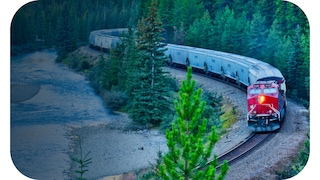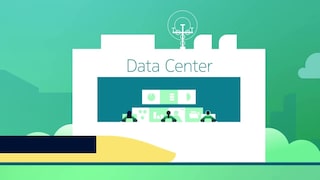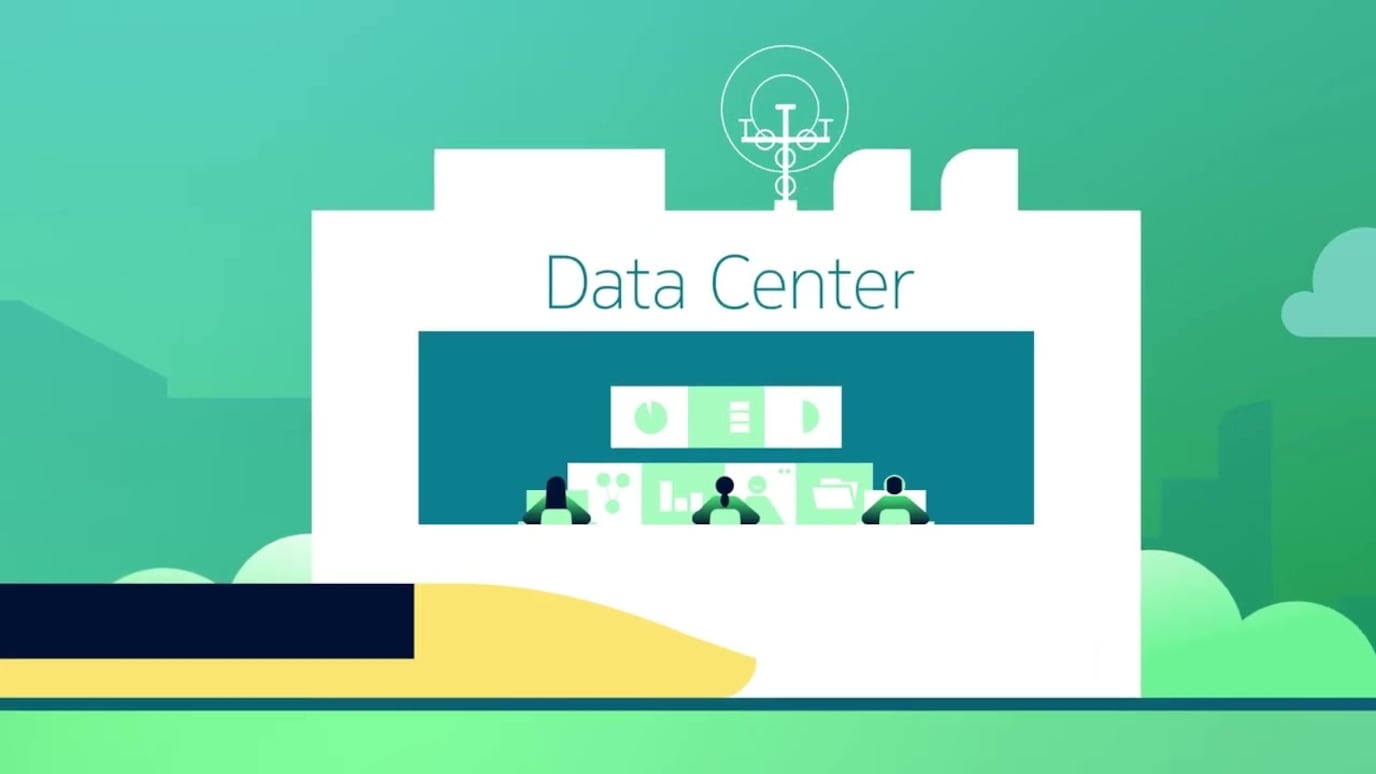Our Data Center Fabric solution seamlessly connects your operational technology to the cloud to help you digitalize and automate your railway operations. Transform your railway network into a data-driven powerhouse that enhances operational performance and delivers smoother journeys for your passengers.
What is rail OT cloud?
Rail operational technology (OT) cloud is a dedicated compute pool that hosts your mission-critical OT applications and data in on-premises facilities such as your data center.
Applications such as SCADA, FRMCS core, interlocking and digital signaling are increasingly being deployed in an OT cloud environment. These applications consume critical, time-sensitive data generated and collected by IoT devices and other intelligent assets to enable real-time situation awareness, train control and automation.
Bringing physical and OT assets together to create adaptive digital railways
A rail OT cloud can play an integral part in helping you build an adaptive digital railway that quickly and confidently responds to challenges created by changing business and operation needs, disruptive weather events and evolving digital ecosystems.
Nokia rail OT cloud networking lets you realize your digitalization ambitions with an open, automated data center fabric that reliably connects physical assets such as interlocking, SCADA remote terminal units (RTUs), switch controllers and trackside IoT sensors to application software in the OT cloud. It extends mission-critical networking from your IP/MPLS backbone core network and access networks—train-to-ground, trackside and station—to the OT cloud data center fabric.
The data center fabric is a key component of mission-critical railway communications
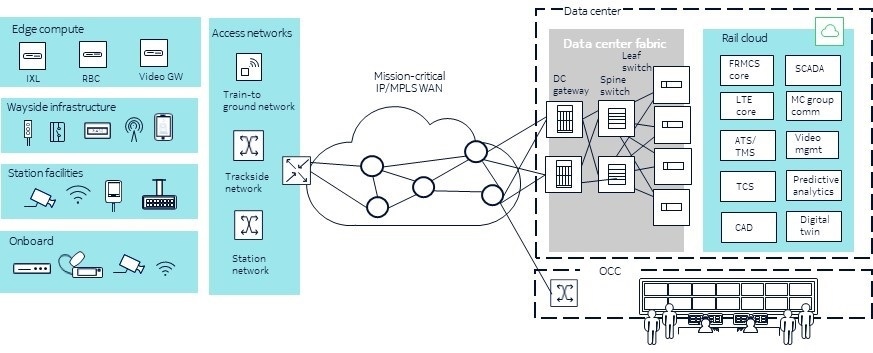
What is a data center fabric?
A data center fabric is a network of leaf and spine switches that collectively provide resilient and scalable connectivity for the servers that host your OT applications and data. Data center fabrics are now an essential component of the mission-critical communications infrastructure for railway operations.
The Nokia Data Center Fabric solution provides mission-critical networking that connects your OT application software to IoT and intelligent assets across the rail system with OT-class reliability, together with an IP/MPLS backbone and access networks. It also provides cutting-edge IT agility to fit your existing IT ecosystem.
With our Data Center Fabric solution, you can bring new levels of extensibility, openness and automation to data center networking. This helps your OT teams manage accelerating rail digitalization and automation with all the control they need. It also enables them to collaborate seamlessly with your data center staff to scale and adapt the fabric more quickly and easily to meet changing OT needs while containing costs and improving efficiency.
Benefits of a rail OT cloud
Accelerate your digital transformation
Securely and reliably connect IoT and intelligent rail assets with OT applications in the cloud.
Build an adaptive digital railway
Use rail automation to monitor and control physical assets in real time.
Meet the demands of digital OT assets
Evolve and scale your data center fabric to keep pace with the growing connectivity and data processing needs of your OT systems.
More about rail OT clouds
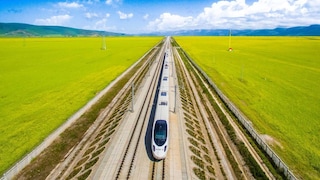
White paper
Harness the power of a railway OT cloud
Rail OT cloud solution components
Solution
Bring new levels of reliability, simplicity and adaptability to your data center switching and cloud infrastructures.
Product
Scalable optimized end-to-end optical transport solutions for DCI, metro, regional and long-haul networks.
Product
Simplify GE/10GE aggregation, port extension and demarcation
Product
Build reliable management network solutions for data centers.
Product
Deploy high-density, high-capacity data center switches for an open, leaf-spine architecture.
Product
Build mission-critical field and wide area networks you can trust
Learn more about railways
Video
Trailblazing technology for always-connected railways

Article

eBook
Video
Powering the digital railways of today and tomorrow

Article

Webinar

Article

Article
Latest news
Ready to talk?
Please complete the form below.
The form is loading, please wait...
Thank you. We have received your inquiry. Please continue browsing.





